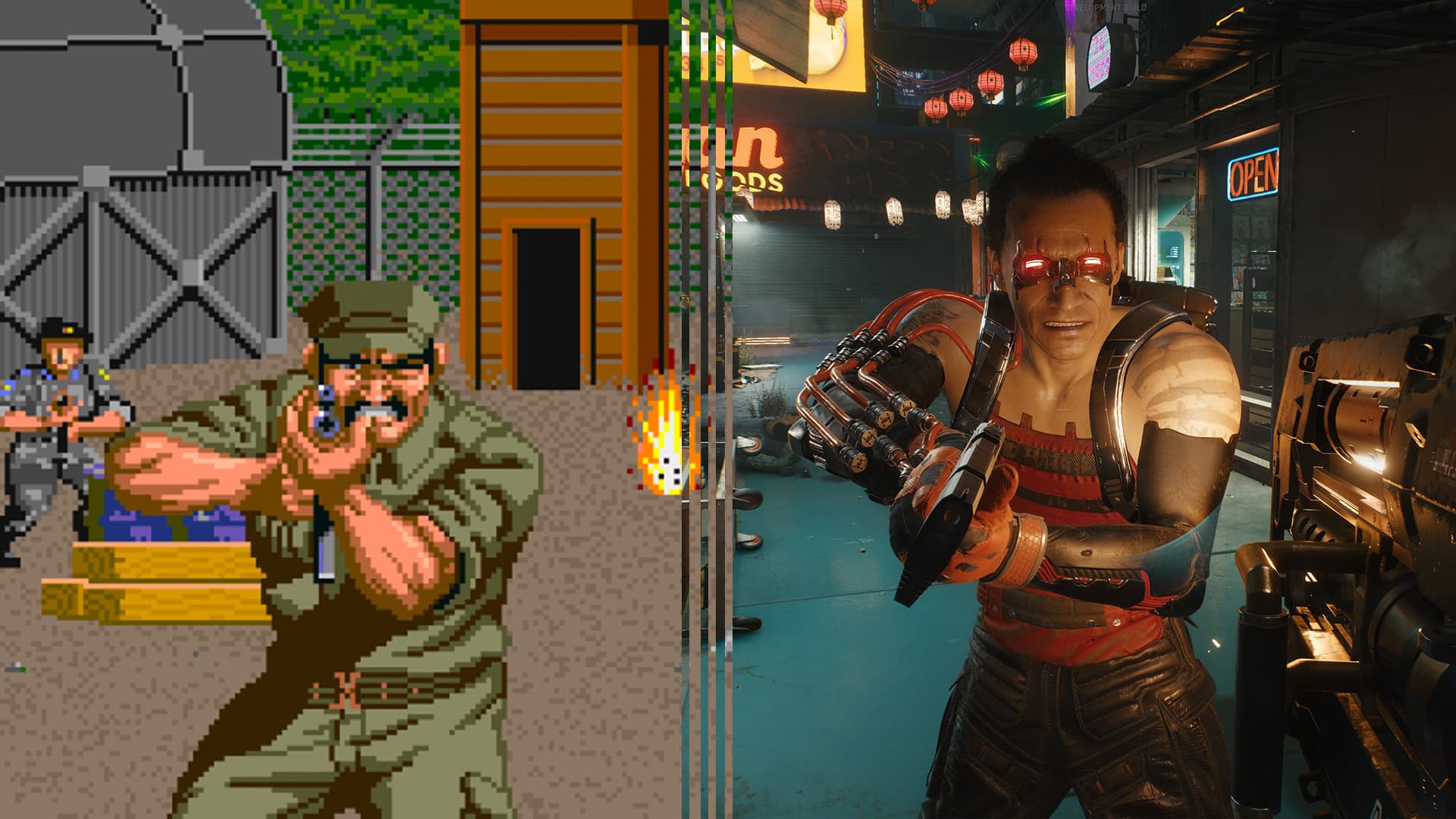Introduction:
In the vast and ever-evolving landscape of video games, one aspect that has continuously captivated players is the advancement of gaming graphics. From the humble beginnings of pixelated sprites to the immersive worlds of virtual reality, the evolution of gaming graphics has been a remarkable journey. In this blog post, we will delve into the fascinating history, key milestones, and breakthrough technologies that have shaped the visual prowess of video games.
.jpg)
The Early Days: Pixels and 2D Sprites
- Discuss the era of early video games, featuring simple graphics composed of pixels and 2D sprites.
- Highlight iconic games like Pong, Pac-Man, and Super Mario Bros. that popularized this graphical style.
- Explore the limitations and challenges faced by game developers in creating visually appealing experiences with limited hardware capabilities.
The Transition to 3D Graphics
- Examine the transition from 2D to 3D graphics and the impact of games like Doom and Wolfenstein 3D.
- Discuss the introduction of polygonal models, textured surfaces, and rudimentary lighting effects.
- Explore the advent of dedicated graphics hardware and its influence on rendering capabilities.
The Rise of Realism: Graphics Acceleration and Advanced Techniques
- Highlight the breakthroughs in graphics acceleration technologies, such as the introduction of 3Dfx Voodoo and NVIDIA GeForce cards.
- Discuss the implementation of advanced rendering techniques like shading, texture mapping, and environmental effects.
- Explore landmark games like Quake, Tomb Raider, and Half-Life that pushed the boundaries of realism and visual fidelity.
High Definition and Cinematic Experiences
- Discuss the arrival of high-definition displays and its impact on gaming graphics.
- Explore the integration of cinematic techniques, such as motion capture and facial animation, for realistic character portrayals.
- Highlight games like Crysis, Uncharted, and The Last of Us that exemplify the pursuit of cinematic experiences within gaming.
The Emergence of Open Worlds and Massive Environments
- Discuss the rise of open-world games and the challenges of rendering expansive environments.
- Explore advancements in level design, lighting systems, and dynamic weather effects.
- Highlight games like The Elder Scrolls series, Grand Theft Auto V, and The Legend of Zelda: Breath of the Wild for their visually stunning open worlds.
Virtual Reality and Immersive Experiences
- Discuss the impact of virtual reality (VR) on gaming graphics and the quest for immersive experiences.
- Explore the demands of rendering stereoscopic 3D visuals at high frame rates for VR headsets.
- Highlight VR games like Beat Saber, Half-Life: Alyx, and Resident Evil 7: Biohazard that leverages the power of VR to create visually captivating and immersive worlds.

Conclusion:
The evolution of gaming graphics has been a remarkable journey, from the simplicity of pixels and sprites to the breathtaking realism of virtual reality. As technology continues to advance, the visual fidelity of video games will continue to astound and immerse players in ever more stunning and lifelike worlds. The future holds endless possibilities, and gamers can eagerly anticipate what lies ahead in the realm of gaming graphics.
Through the years, gaming graphics have transformed the way we perceive and interact with virtual worlds, enabling us to embark on unforgettable adventures that blur the line between fantasy and reality. So, let us appreciate the past, embrace the present, and eagerly anticipate the future as we witness the ongoing evolution of gaming graphics.
